I Have A (Smart) Flip Phone, And Strangers Constantly Stop Me To Ask About It. Here’s My Honest Experience
Hey, I’m Victoria, and for a year now, I’ve had the Samsung Galaxy Z Flip 4. Without fail, whenever somebody notices my phone, they ask me about it — from baristas at my local Starbucks to the Tullamarine Airport, passengers on the train to colleagues at work, and even friends who are diehard Apple users. Given the public’s interest in the foldable smartphone, I decided to write a review about my experience and address their frequently asked questions.
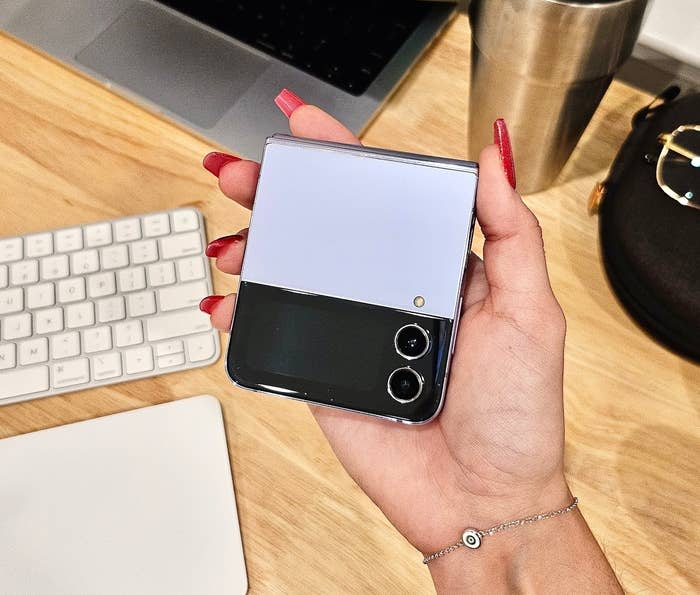
If you want a good conversation starter, just get this phone. Seriously, by now, my answers are so down pat that I could pitch a Ted Talk.
(And before you accuse Samsung of paying me to write this, let me emphasize that I wrote this of my own volition because I am still getting asked about my phone.)
While I’ll drop in some technical specs, my main focus is sharing my real-world experience with the Flip 4, as well as the new Flip 5, which I’ve had for a couple of months now. Both phones offer a similar user experience — they’re successive generations of Samsung’s Galaxy Z series — but as I’ve found myself explaining, the Flip 5 brings some pretty significant upgrades.
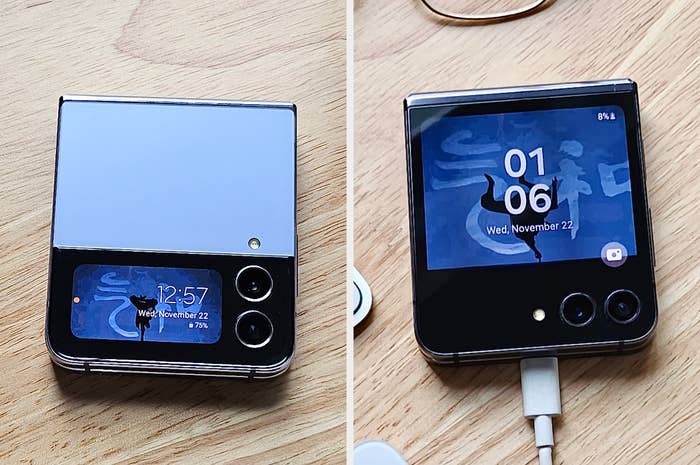
Here’s a breakdown of what I’ll cover:
? Size
? Cover Screen*
? Camera
? Hinge
? Flex Mode
? Battery
? Crease (Main Screen)
? Durability
*The cover of the Flip — as in the top of the phone when it’s folded — has a screen, aptly called the cover screen. The interior screen is called the main screen.
Before getting into it, I’m sure some of you are wondering if I had an iPhone before the Flip 4. It’s something I’m often asked, and I get it. No, I had a Samsung Galaxy S20+. It measured 6.4 inches long and 2.9 inches wide. (For all of you Apple lovers, it’s roughly the size of an iPhone 15 Plus.) When upgrading, I was between the S22+ and the Flip 4. The Flip 4 had been out for two months, and I was optimistic that Samsung had ironed out any big issues by its fourth generation. Plus, its quirky design caught my eye.
Until the Flip 4, I’ve had some generation of Galaxy S phones since 2015 — when the screen of my iPhone 5s cracked for the third time and I switched to a Samsung Galaxy S6 Edge.
After looking into reviews comparing the S22+ and the Flip 4 — most of which listed the Flip 4’s “cons” as its lack of dust resistance, camera, and battery life — I felt confident and curious enough to give it a go.
Now, a year later, here’s everything I’d tell you about the Flip 4 and Flip 5 if I ran into you IRL:
[SIZE]
As is the case for most people, the first thing that caught my attention about the Flip 4 was its foldability and compactness. I was over carrying around six-inch phones, especially as a woman; it’s a constant game of Tetris (if not Sophie’s Choice) fitting them into smaller bags — let alone fitting them into the rare clothing pocket.
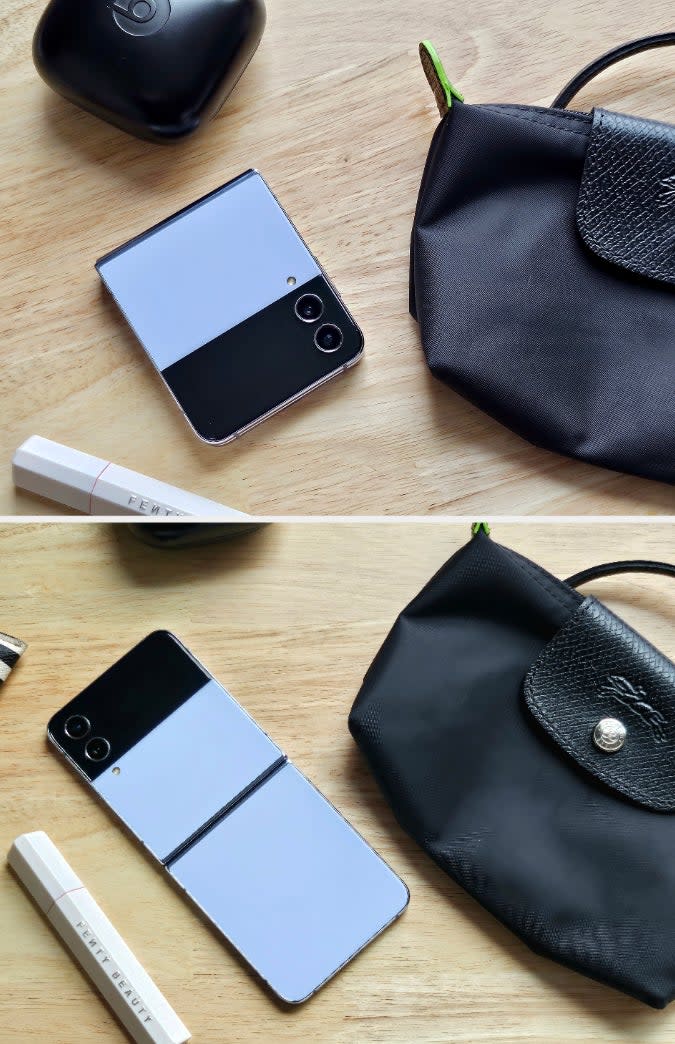
When folded, the Flip 4 is 3.3 inches long and a bit under 3 inches wide. When opened, it doubles in length, making it 6.5 inches long — slightly taller than the S22+ and iPhone 15 Plus.
However, folding my Flip 4 and slipping it into my bag or pocket has been a breeze. I don’t even have to worry about orienting it in a particular direction to protect the main screen. At most, I’m mindful of the cover screen, but its small, 1.9-inch display makes it low risk. With the Flip 5, I’m more careful — it’s the same size as the Flip 4, but its 3.4-inch cover screen takes up most of the phone’s cover.
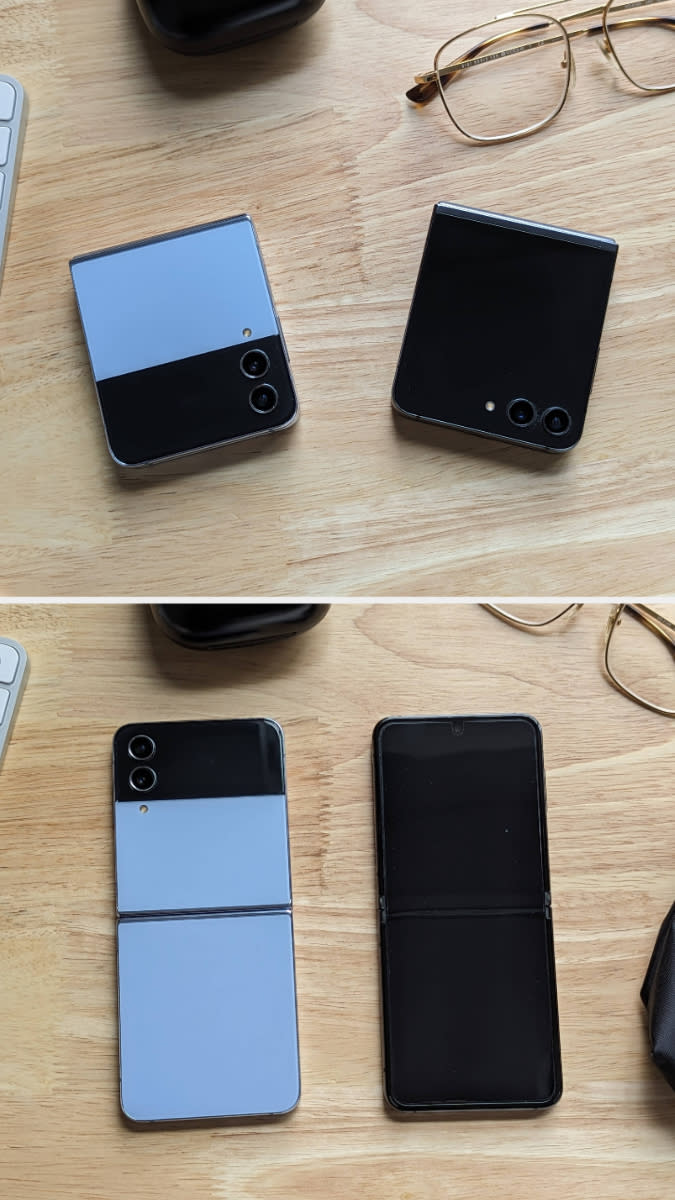
The Flip 5’s cover screen has a pre-installed screen protector to help prevent damage, but it’s not much different than worrying about a non-foldable phone’s exposed screen. Consequently, some people prefer the Flip 4 for its smaller cover screen.
[COVER SCREEN]
Speaking of cover screens, the Flip 4’s is a quirky blend of nostalgic charm and modern functionality. It not only displays the date and time like classic flip phones of the ’90s and ’00s but also works as a mini lock screen.
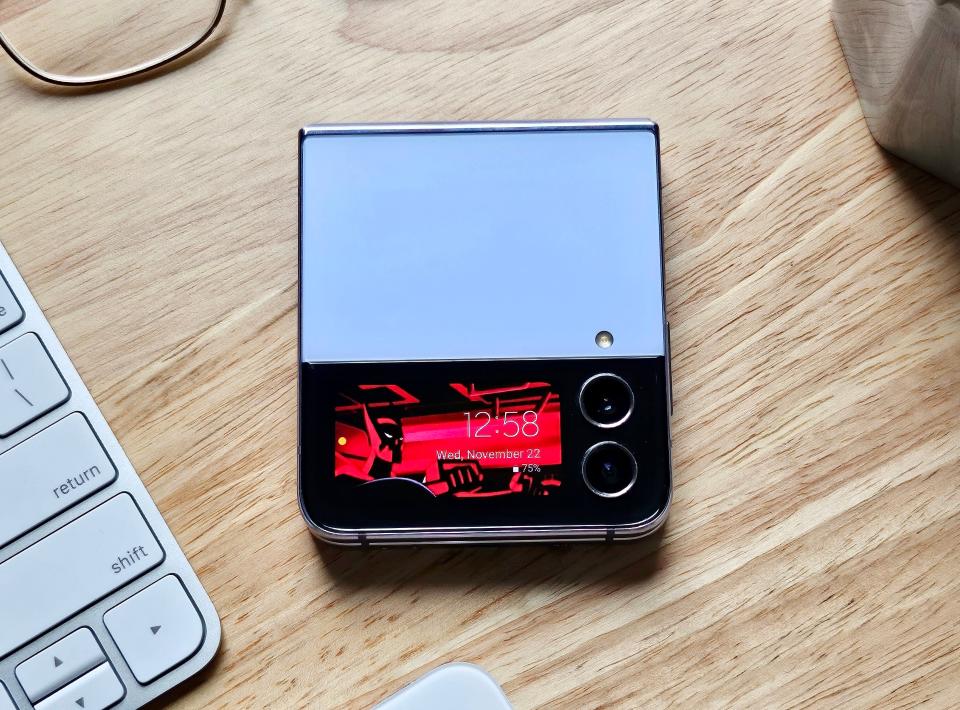
By swiping in different directions, I can easily access my settings, notifications, widgets, and digital wallet. More practically, it saves me the hassle of repeatedly unfolding my phone to check texts or skip songs — which is incredibly convenient when walking my dog, trekking through the city, or running on a trail.
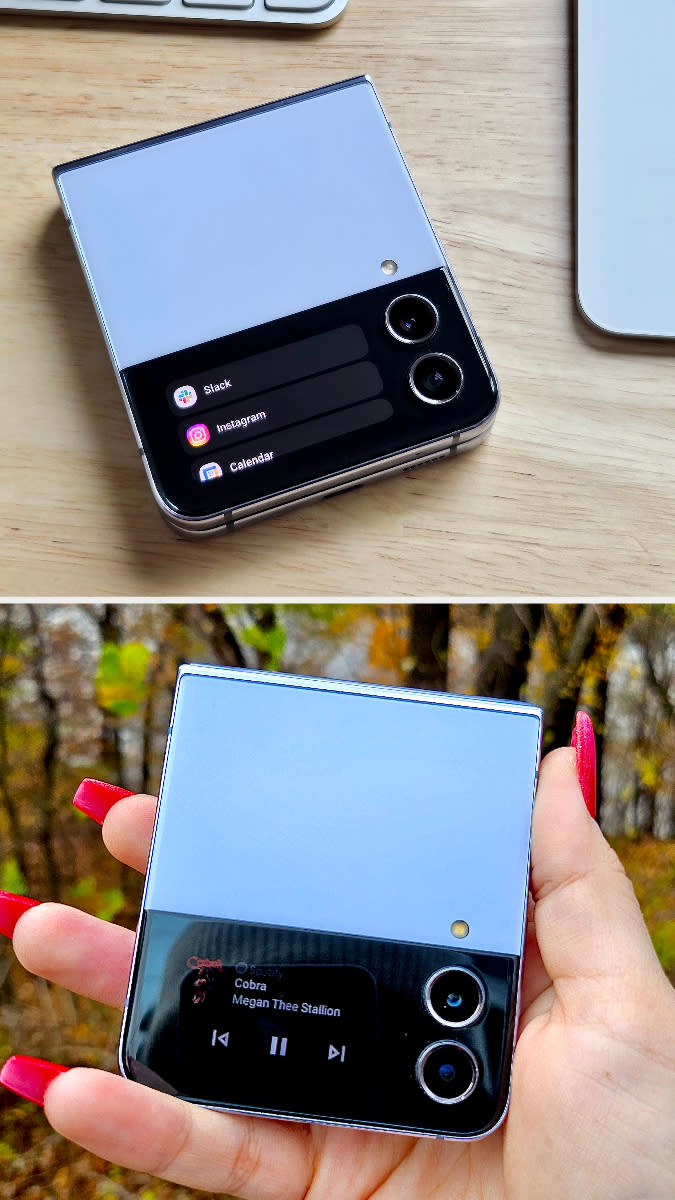
Additionally, I can respond to incoming texts on the cover screen with predefined messages or voice-to-text. I can also answer or decline calls and access the camera by double-clicking the lock button (which turns the cover screen into a viewfinder, but more on that later!).
Although the Flip 4’s cover screen isn’t designed to launch apps, Samsung’s Good Lock app provides a workaround widget. I mostly use it to check texts and emails (beyond notifications), follow Google Maps while walking through the city, or play YouTube videos. But given the limited screen size, it’s not ideal for extensive app usage. (It’s too small to use the keyboard, for example.) At that point, I might as well use the main screen.
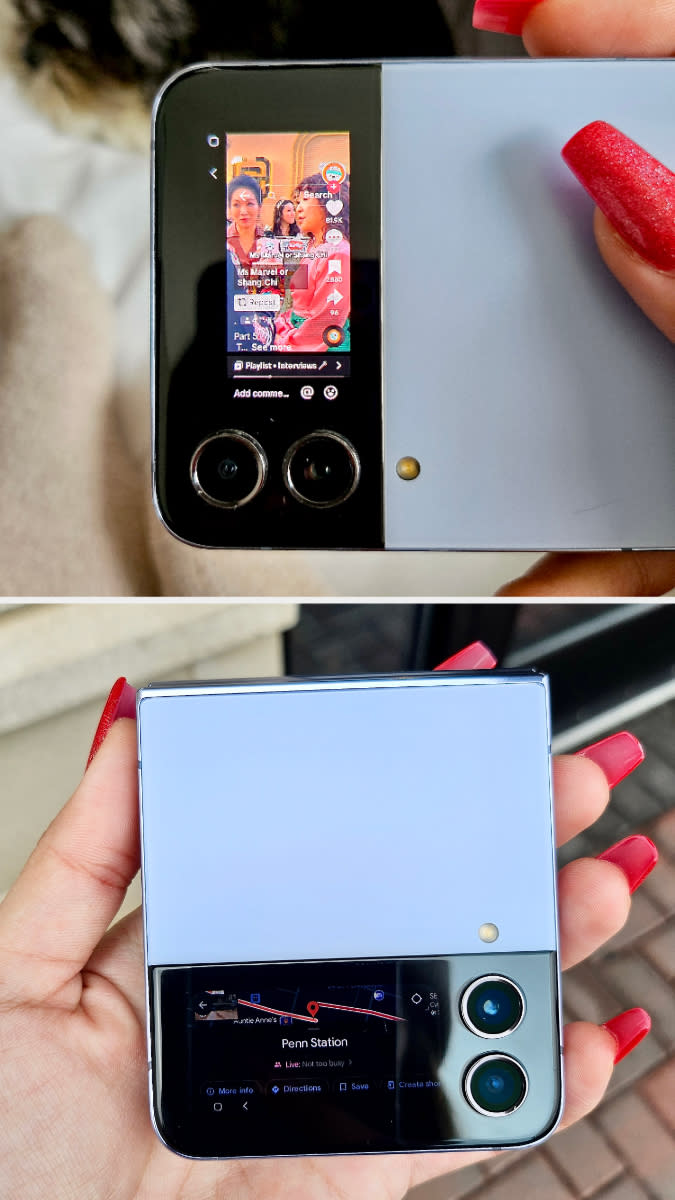
On the Flip 4, I can only add five apps to the widget launcher at a time.
Alternatively, there’s a premium app called CoverScreen OS on the Google Play Store that essentially turns the cover screen into a main screen. This guy even used it to play Call Of Duty on his Flip 4’s cover screen.
That’s where the Flip 5 takes things to the next level. Officially called the “flex window,” its cover screen boasts a 3.4-inch display and proper functionality.
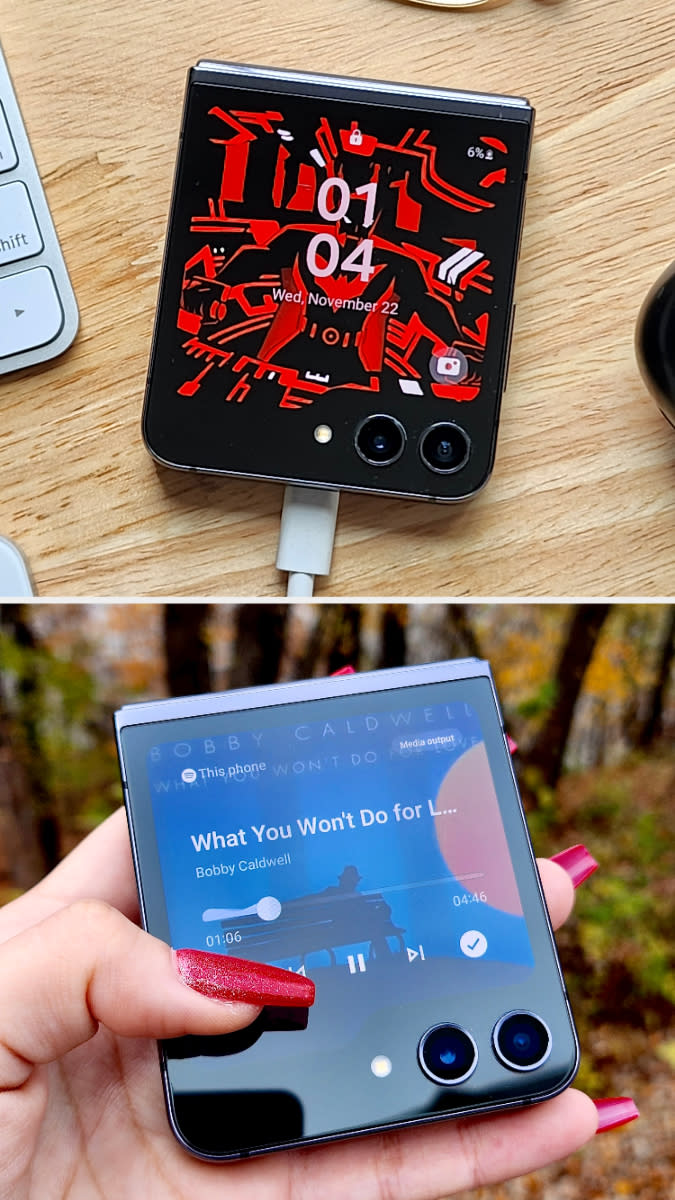
The flex window is not only capable of doing everything the Flip 4’s cover screen can, but it can also fully launch apps and the keyboard. Whereas I can only respond to texts with predefined messages or voice-to-text on the Flip 4’s cover screen, I can use the keyboard on the Flip 5’s. That also comes in handy when using other apps requiring text input, such as search.

Currently, Samsung natively supports six apps on the cover screen: Samsung Messages, Google Messages, WhatsApp, YouTube, Netflix, and Google Maps.
While the Flip 5’s cover screen isn’t exactly a “mini” main screen, downloading Good Lock or CoverScreen OS can enable more apps and features, as with the Flip 4.
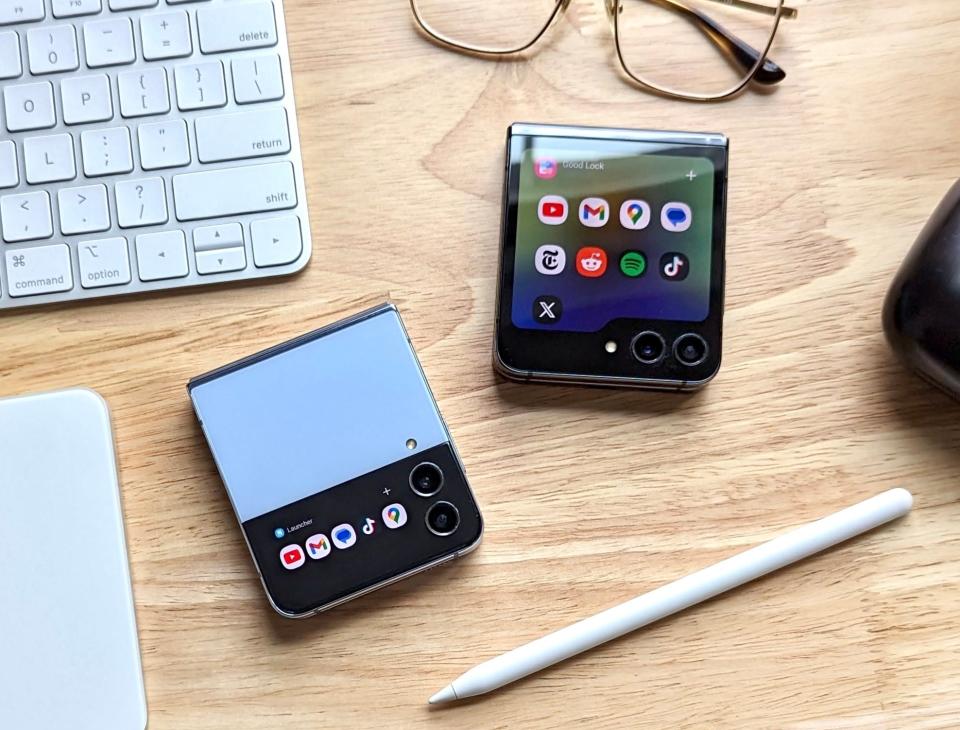
For the most part, I can comfortably use the Flip 5 while folded, thanks to its larger cover screen display, which is incredibly convenient and fun. It also enhances other aspects of the phone, like battery life and camera versatility.
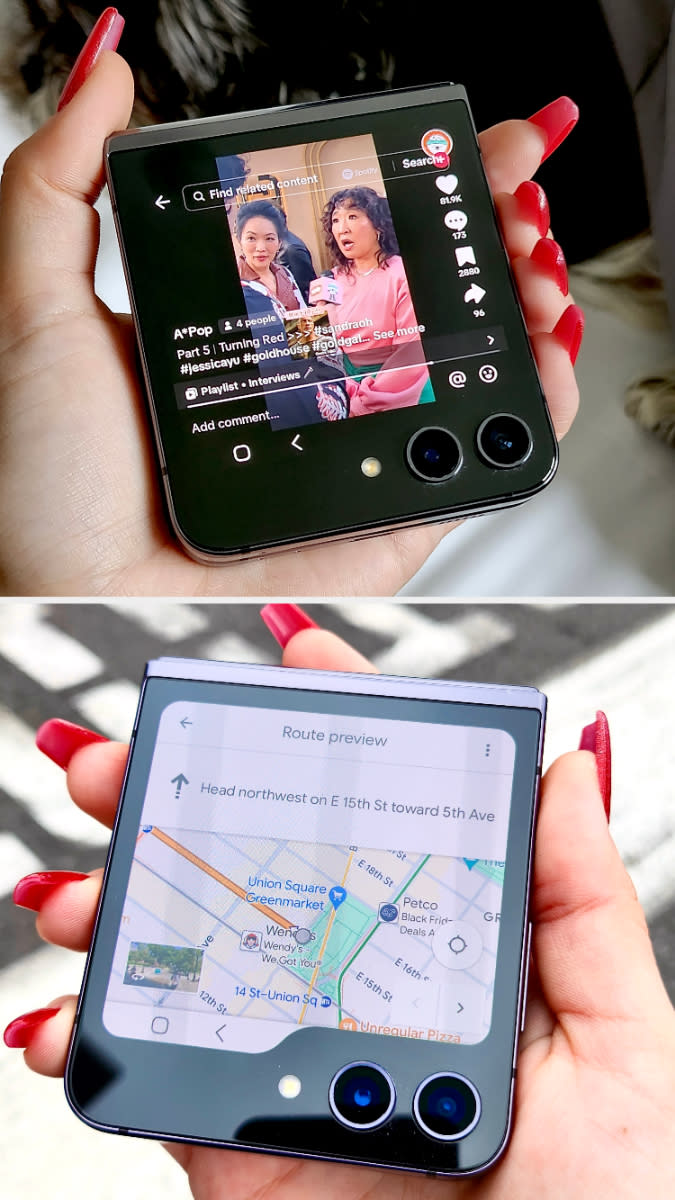
I’ll also add that both the Flip 4 and Flip 5 are fun to customize. Over the months, I’ve worked toward maxing out the 15 wallpaper limit! Every time I turn on the cover screen, it shows a new wallpaper (whether they’re images, videos, or GIFs).
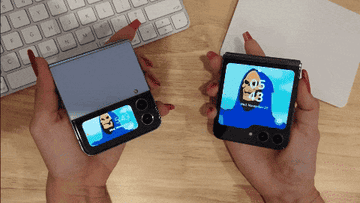
It’s also possible to arrange the wallpapers to be displayed in a particular order. (I imagine that would be cool if you had sequential GIFs.)
Please excuse the poor quality...I sped up a video and converted it into a GIF. Hopefully, you get the gist.
[CAMERA]
Let’s get straight to the point: The Flip 4 and Flip 5 sport pretty solid cameras. (There’s no difference between them.) Not only have I found the photo quality satisfying, but even my iPhone-loving friends occasionally prefer my phone for pictures. What truly sets the Flip 4 and Flip 5 apart, though, is their foldability and cover screens, which open up a world of fun and creative photo ops.
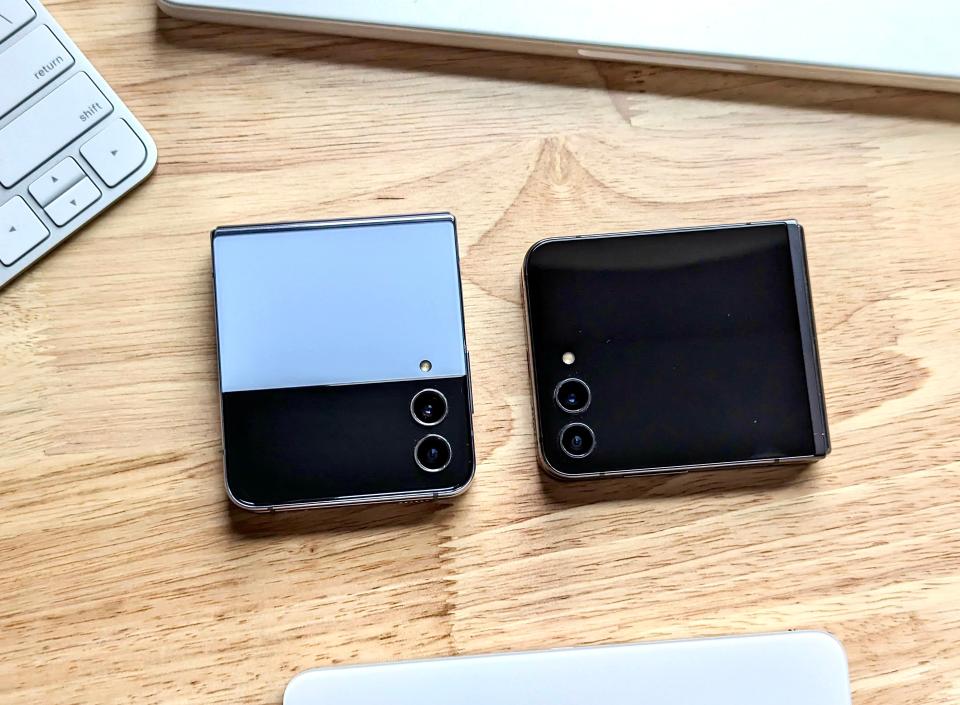
Both the Flip 4 and Flip 5 come equipped with a 10 MP front camera, a 12 MP wide lens rear camera, and a 12 MP ultra-wide lens rear camera. While the front and ultra-wide lenses are pretty standard, the wide lens doesn’t quite measure up to the S23 Ultra’s mighty 200 MP wide lens.
It’s also worth mentioning that neither Flip generation features a telephoto lens like the Galaxy S series devices. To be honest, I rarely used the telephoto lens on my S20+, so I haven’t found its absence to be a deal-breaker.
There are three main ways I use my Flip 4 to take cool shots: First, by folding the phone and placing it at a distance, like on a table, I’ve captured wide group selfies with the front camera. That’s always a crowd-pleaser at parties. Second, using the cover screen as a viewfinder, I’ve taken fun selfies with the rear camera (the new trend, I’ve been informed). I can see what I’m pointing at and even use the flash.
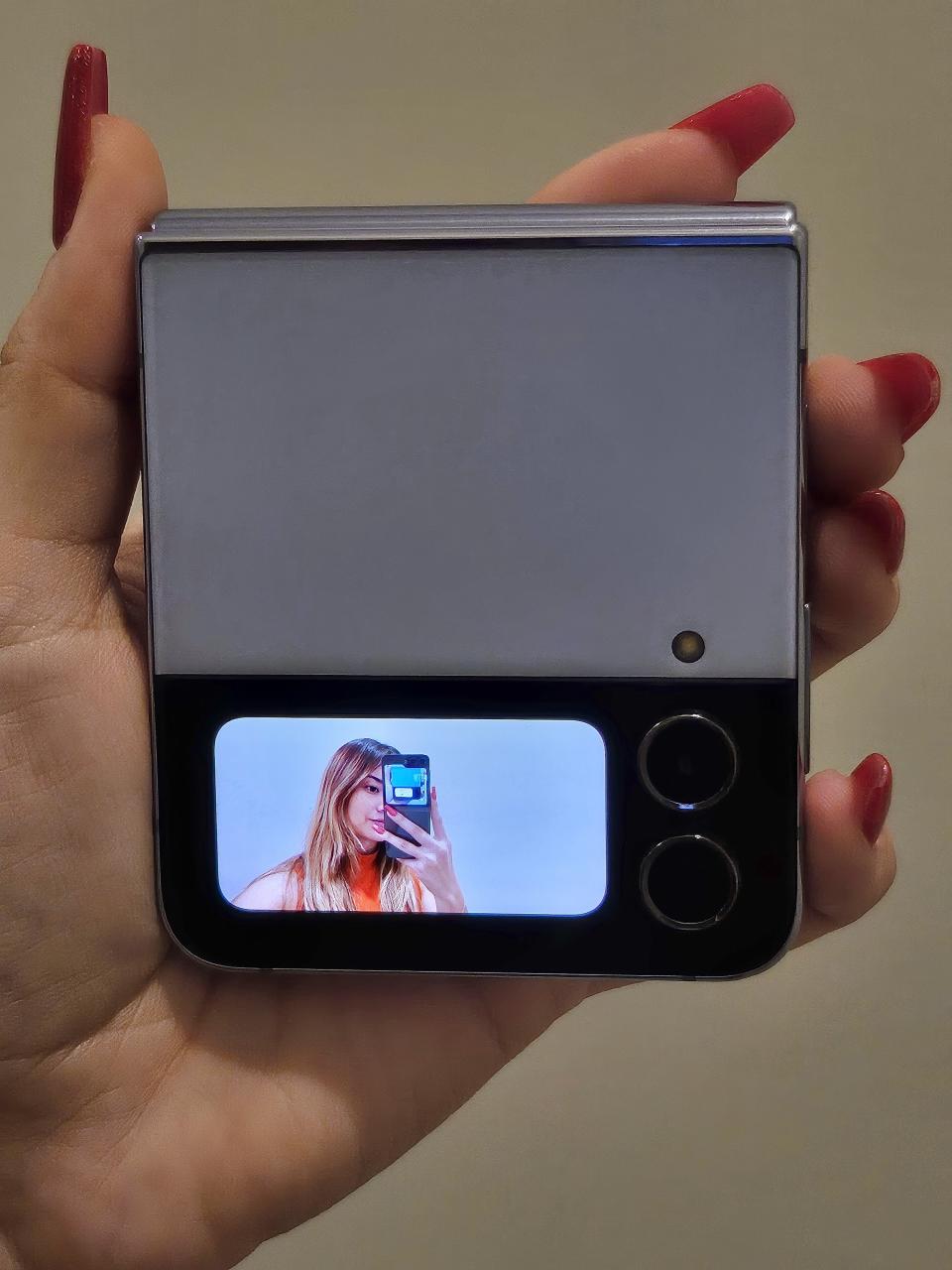
Here I am taking a photo with the Flip 5 of a rear-camera selfie with the Flip 4.
No matter the aspect ratio displayed on the cover screen (which can be adjusted in the camera settings), the photos or videos maintain the same ratio as those taken with the front camera. The dimensions won't get cropped to match the cover screen.
Third — and especially unique — while using the rear camera to take photos of others (as one typically does), I’ve turned on the cover screen so they could see themselves in the viewfinder in real time. It’s also given me an idea of whether I’ll have to wait for the stranger taking my picture to leave before asking someone else. Here’s an example of all three in action:
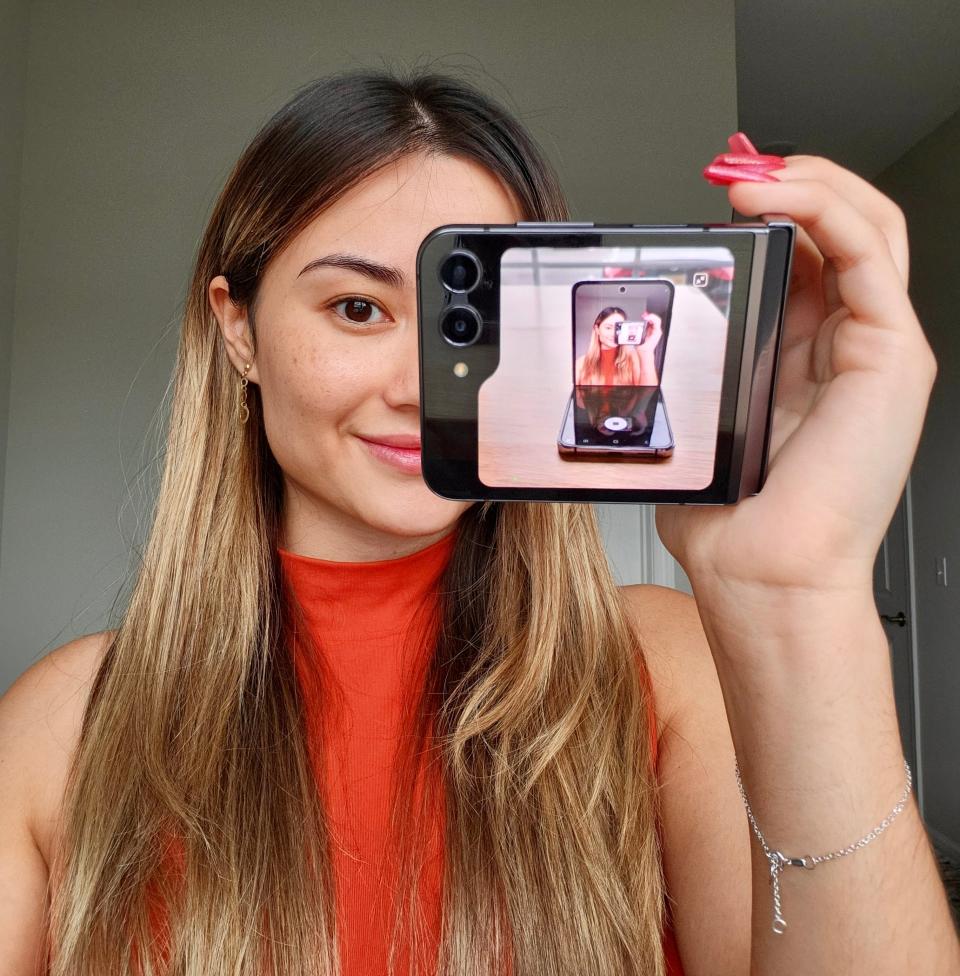
I can also easily switch between photo, video, and portrait mode by swiping left or right, and zoom in and out by swiping up or down on the cover screen.
[HINGE]
When I first got the Flip 4, I was surprised by the slight gap between its halves when folded, but I don’t mind it; it makes it easier to unfold single-handedly. On the other hand, the Flip 5 folds completely flat with its new “flex hinge,” which also has improved durability and motion — something I learned when I looked up why unfolding the Flip 5 felt looser than the Flip 4.
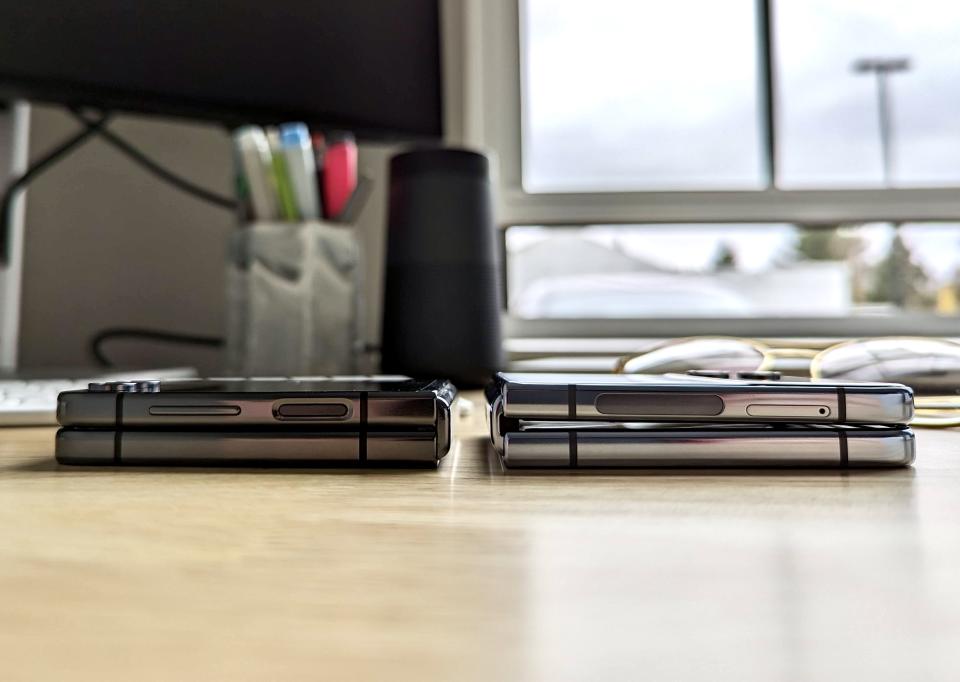
About that lack of dust resistance — both the Flip 4 and Flip 5 have an IPX8 ingress protection rating, meaning they’re water-resistant but not dust-resistant. That’s mainly because their hinge design leaves breaks along the main screen’s bezel, but those haven’t posed a problem for me. Instead, my Flip 4’s first beach visit revealed that small debris (like sand!) could enter the phone through exposed seams along the back of the hinge.
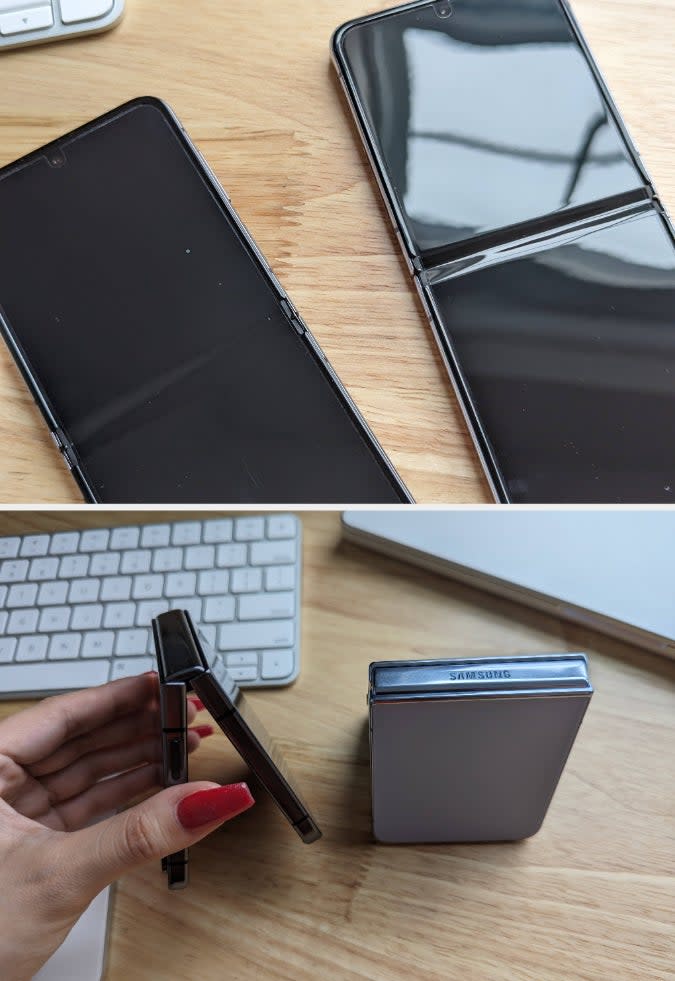
I kept my Flip 4 safely tucked in my backpack at the beach. While a few grains of sand slipping in didn’t surprise me, I was caught off guard when I discovered them nestled along the phone’s seams.
Thankfully, I brushed off the sand and unfolded the phone without hearing any crunching, and I’ve been mindful of the lack of dust resistance ever since. But as I’ll explain later, the hinge is likelier to get damaged from a drop than debris.
[FLEX MODE]
That said, the hinge also makes Flex Mode possible! Basically, when I fold the phone between 75 and 115 degrees, Flex Mode splits the main screen in half and adapts apps accordingly. I can then multitask by using the top and bottom halves of the screen independently or go hands-free by turning the phone into a mini-laptop, complete with a touchpad and cursor.
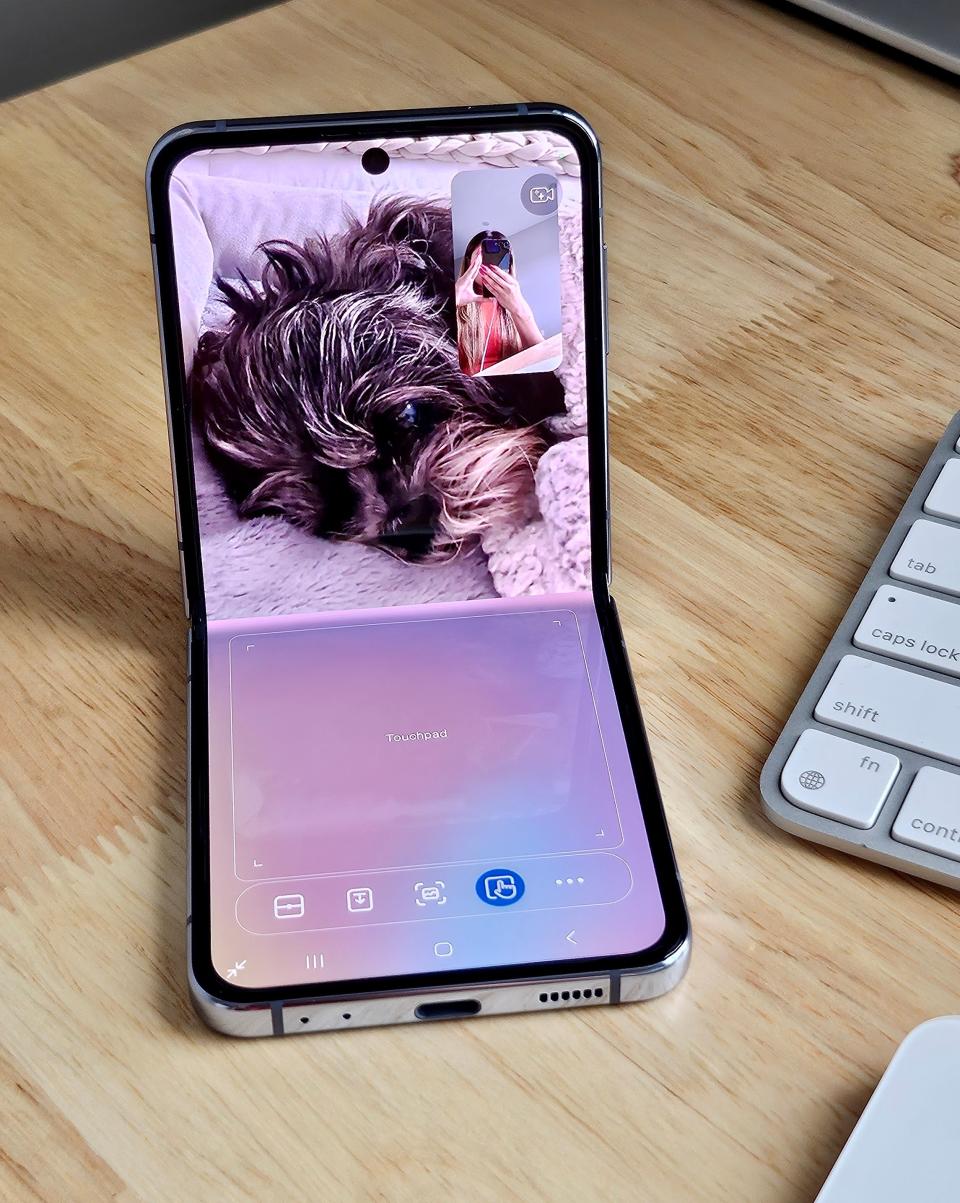
Flex Mode is a handy multi-screen feature in all Galaxy Z series phones. It essentially uses Android’s split-screen and pop-up view capabilities to give the phones’ foldability a functional edge:
? Split-screen view splits your screen vertically into two windows, allowing two apps to run side by side. You can adjust the split percentage by dragging the dividing line.
? Pop-up view displays apps as floating windows that you can freely move around the screen. You can open up to five windows at once in pop-up view.
Of course, Flex Mode can be turned off in the settings, and either view can be used without folding the phone.
I usually use Flex Mode to go hands-free while on video calls (as seen above — yes, that’s my dog) or eating. I also use it to multitask when I’d otherwise have to switch back and forth between apps. For instance, I like to use split-screen view when inputting numbers from another app into my calculator or referencing info between windows, like reservations or prices. When my attention span is sapped, I may or may not use it to scroll through TikTok and Reddit simultaneously.
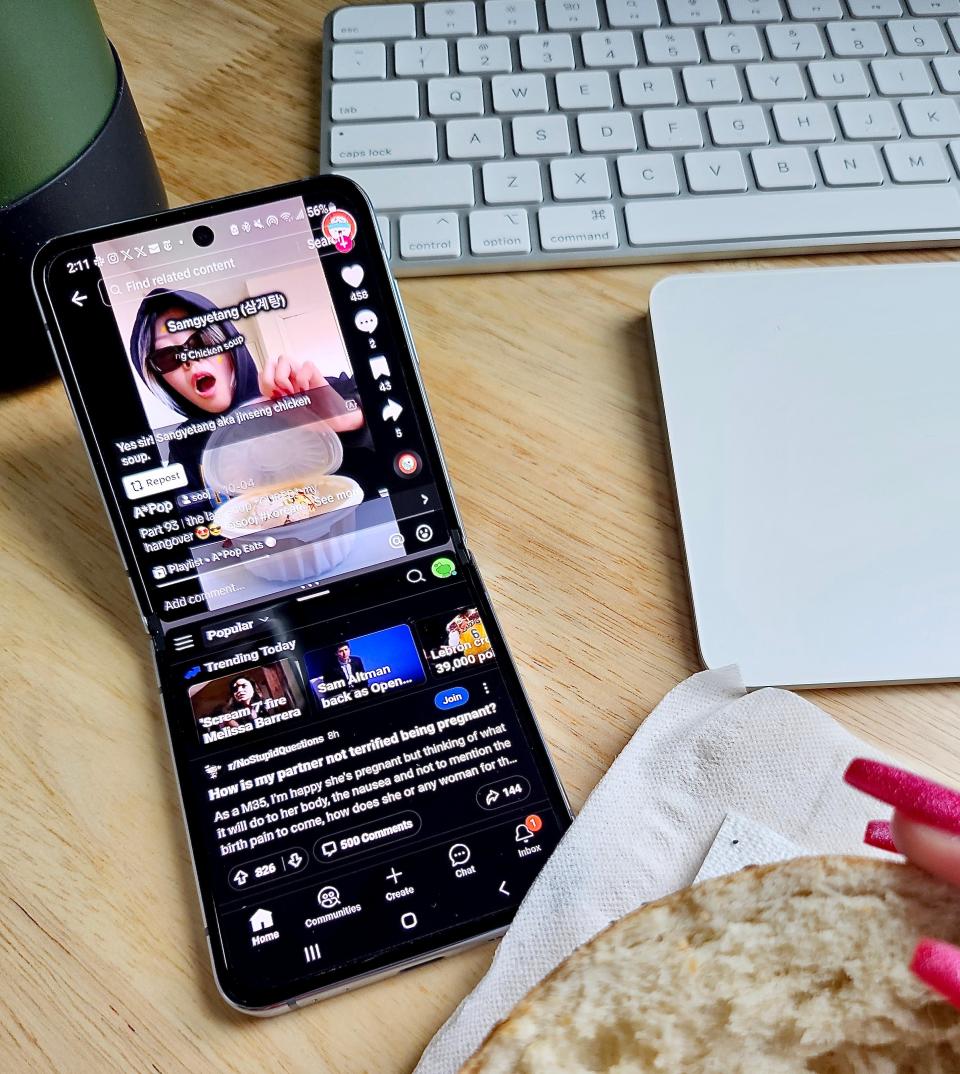
[BATTERY]
Initially, I was concerned about the Flip 4’s battery life due to reviews I read. However, after 11 months of use, I can confirm that it reliably gets me through the day on a single charge, even with heavy phone and Bluetooth earbud use. Still, it drops below 20% battery when I’m out late, so I always keep a charger handy just in case.
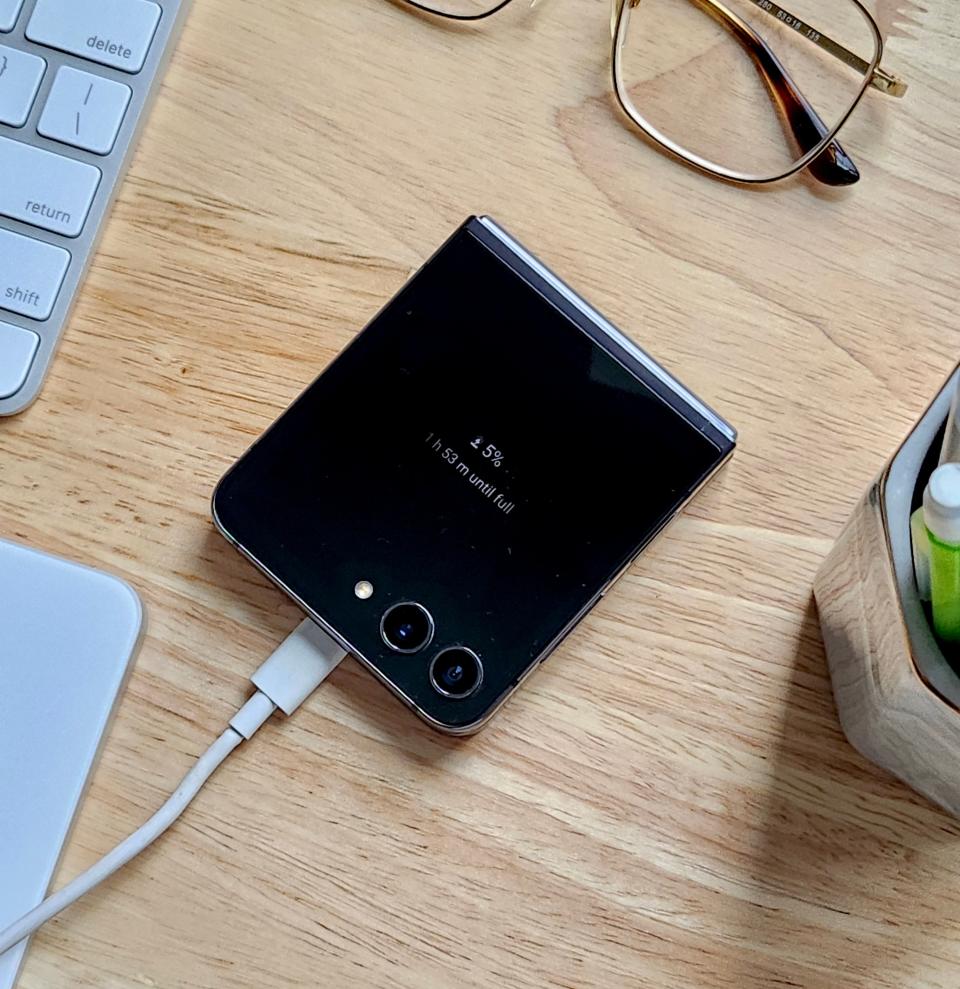
The Flip 4 has a slightly smaller battery capacity (3,700 mAh) than the S20+ and S22+, which may have fueled initial concerns. Nevertheless, it has a newer chipset (Snapdragon 8+ Gen 1), making it more power-efficient.
As for the Flip 5, it has the same battery capacity as the Flip 4 but a slightly longer battery life — courtesy of its even newer chipset (Snapdragon 8 Gen 2) and functional cover screen. (Its functional cover screen can help conserve power by reducing the need to use the main screen as much, extending the phone’s overall battery life.)
[CREASE]
OK, if we were in person, this is the part where I’d tell you to feel the Flip 4’s crease for yourself. You’d likely say, “Wow, it’s not noticeable!” I’d agree, adding that it’s not like your thumb regularly glides across the center of the screen anyway. Sure, there’s a slight depression on the main screen — it has to fold somehow — but it’s incredibly subtle to the touch and doesn’t distort the display. The same goes for the Flip 5.
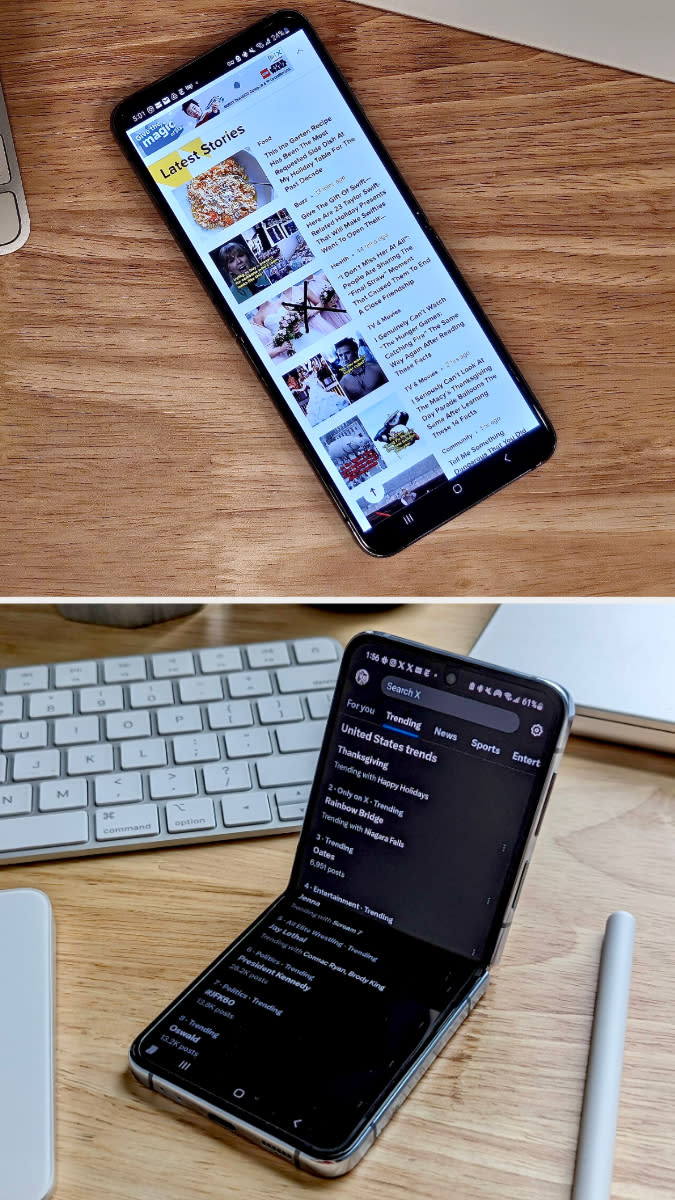
Even when I fold the phone down at 90 degrees, without Flex Mode on, there’s no distortion in the text or images as they pass over the crease.
Now, if you’ve looked into the Galaxy Z series before, you may have come across some complaints about the crease — likely about the screen protector lifting (not a big deal) or the main screen failing (a big deal). I experienced both with my Flip 4, but fortunately, Samsung fixed them under warranty.
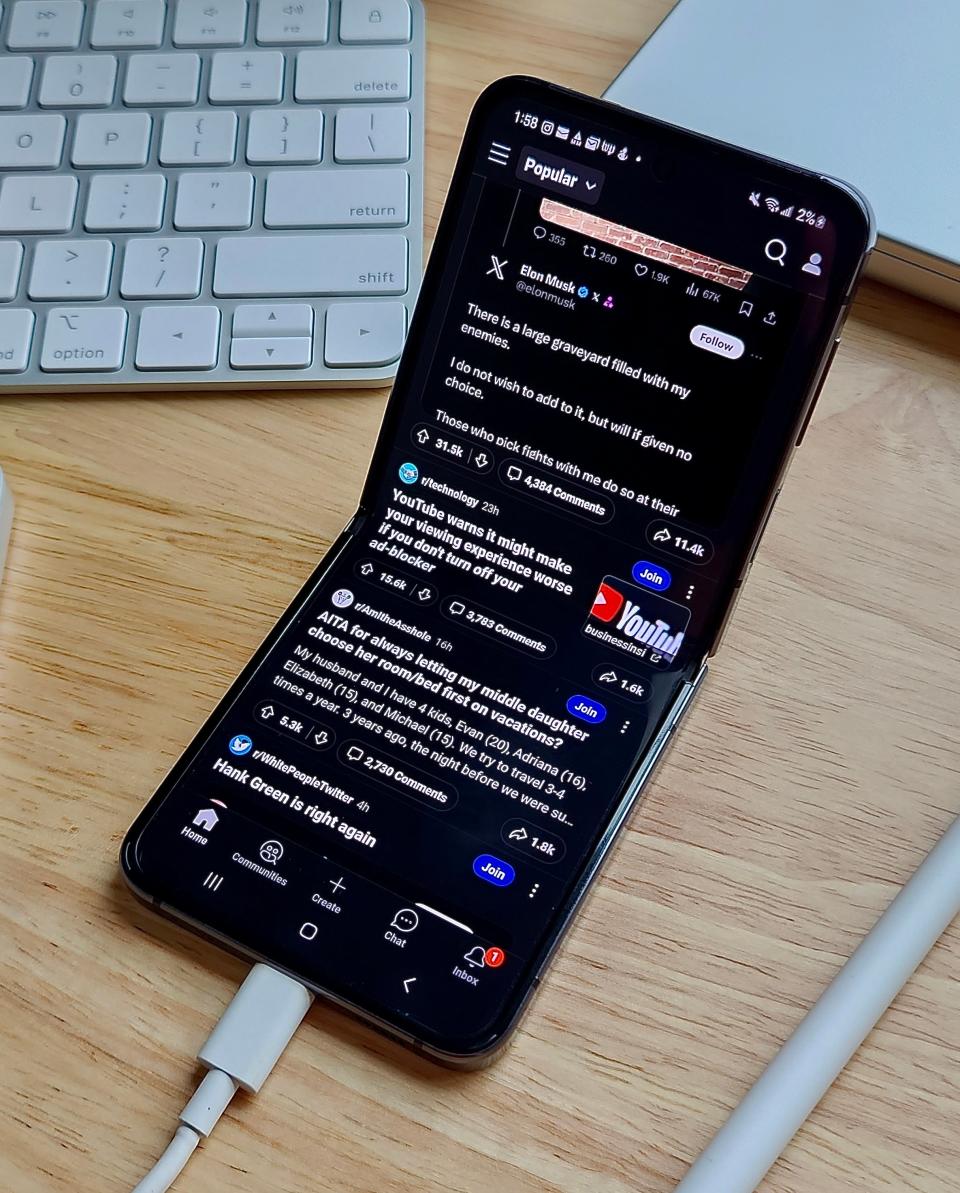
The pre-installed screen protector on the main screen is designed to withstand bending, but it naturally lifts over time — usually along the crease. Mine lifted after eight months, but Samsung covers a one-time replacement under the one-year warranty. Otherwise, it costs $19.99, which is reasonable, in my opinion, since you have to purchase separate screen protectors for most phones.
Main screen failure, often occurring along the crease, is typically linked to hinge damage. About 10 months in, my Flip 4 suddenly stopped fully unfolding. The top half of the main screen became unresponsive before it went entirely black. I took it to a Samsung store, where a representative told me the left corner of my hinge had cracked. It likely got damaged from a prior drop and finally gave in. Within a day, they fixed it and replaced the main screen.
[DURABILITY]
I know I talked about my issues with the Flip 4’s hinge and main screen, but I still find the phone durable. Even without a case, it’s survived multiple drops with minimal damage — just some chipping along the edges. Meanwhile, neither screen has cracked or even gotten scratched. Yeah, my hinge eventually cracked, but it’s worth noting that most non-foldable smartphones wouldn’t fare much better. (My previous phones have broken from less.) So, as long as you’re careful with the hinge, the phone is surprisingly tough.

Thankfully, I haven’t dropped the Flip 5 (yet), but it should be more durable than the Flip 4 with its flex hinge.
[CONCLUSION]
In the end, I can confidently say I have no regrets about getting the Flip 4. It’s every bit as quirky as I expected and even more practical. I can easily slip it into my purse or pocket without concern for the main screen, and conveniently go hands-free or multitask whenever needed. Plus, I still get a kick out of its cool features, like the cover screen.
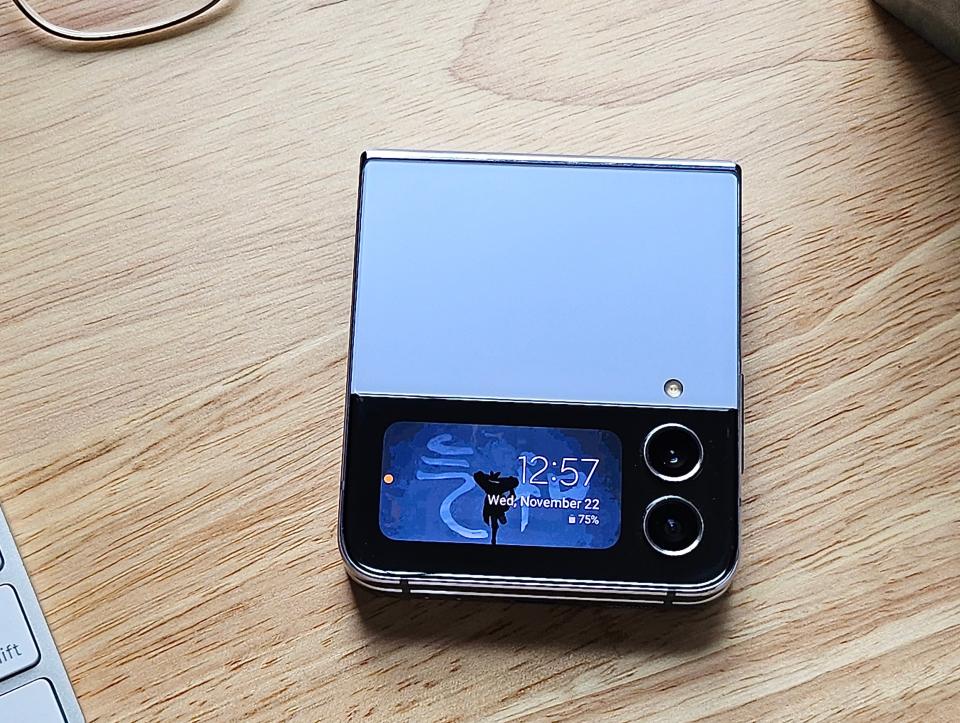
Now, you might be wondering whether I’d recommend the Flip 5 over the Flip 4. The answer? Yes and no. If you’re new to the Galaxy Z Flip series and looking for a foldable smartphone, the Flip 5 is a resounding "yes." But if you already have the Flip 4, it’s a matter of personal preference.
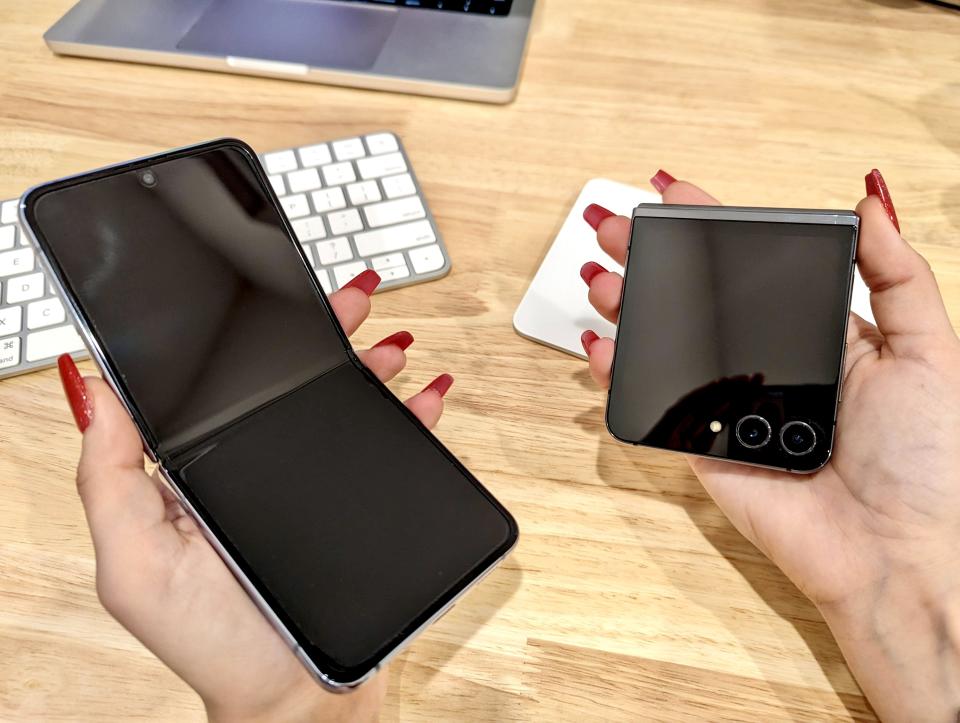
The Flip 5’s flex window is fun, and its flex hinge is more durable. At the same time, neither feature is a make-or-break necessity.
No matter the generation, the Galaxy Z Flip series delivers a fun balance of quirky nostalgia and modern functionality. It’s also a curious reminder of the innovative — if not cyclical — evolution of cell phones. At this point, the idea of returning to a non-foldable smartphone (ironically) feels like a step backward. Oh, and before I forget: Yes, it’s just as satisfying to flip your phone shut now as it was back then.
What do you think? Do you have a foldable smartphone? Would you consider getting one? Share your thoughts in the comments below!